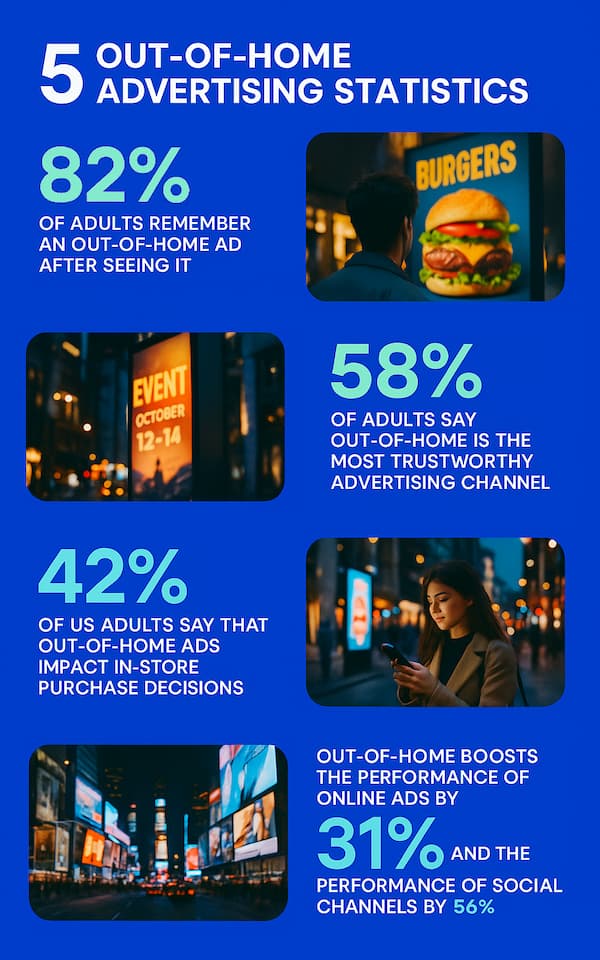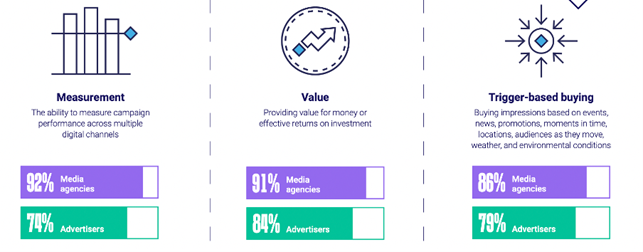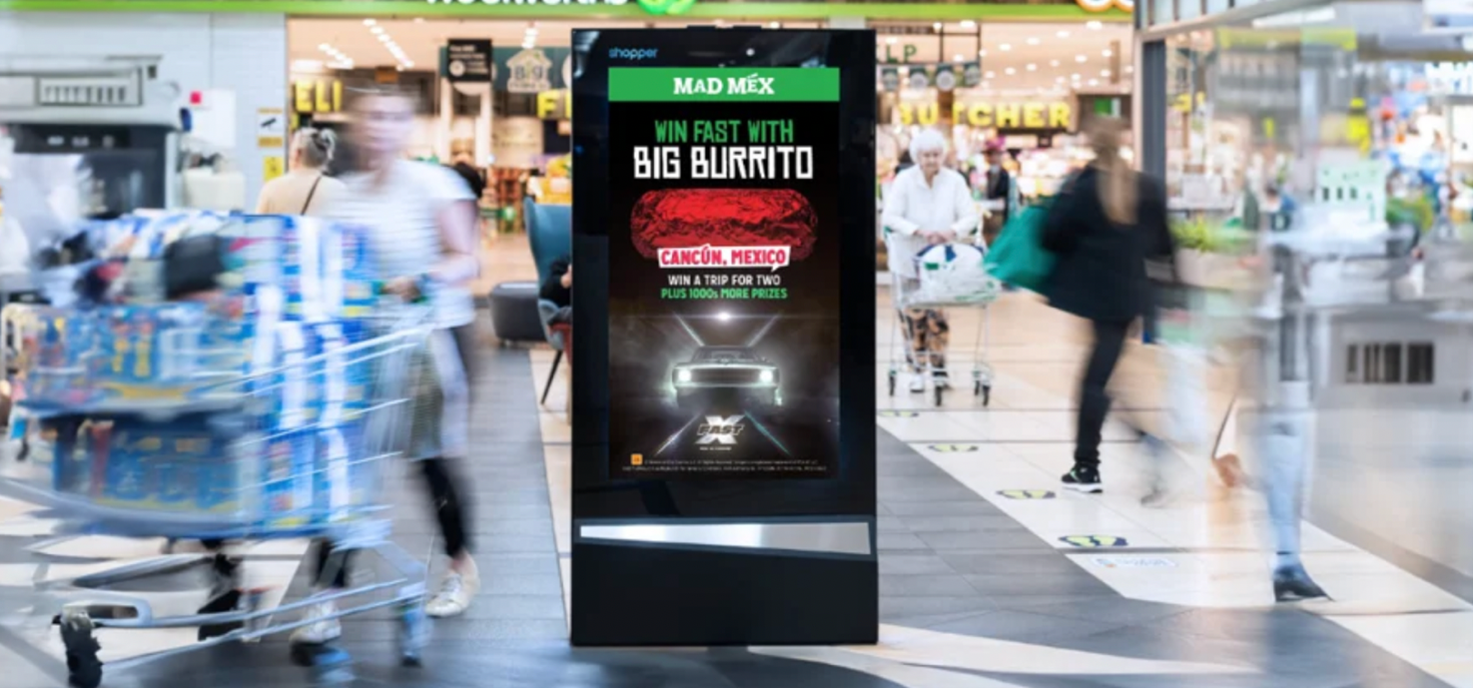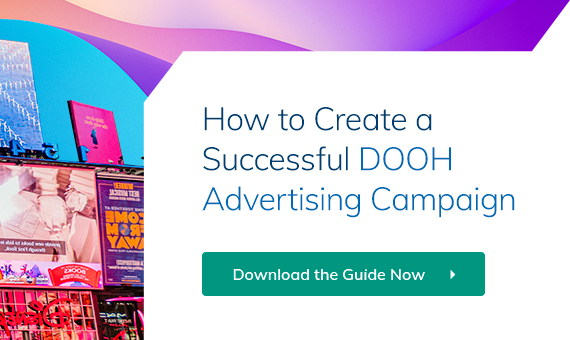Why DOOH Marketing Is a Game-Changer for Agencies
In today’s crowded advertising landscape, standing out is harder than ever. Consumers are constantly bombarded with digital ads, leading to banner blindness, ad fatigue, and declining engagement rates. This is where Digital Out-of-Home or DOOH marketing changes the game.
Unlike traditional Out-of-Home (OOH) advertising, which relies on static billboards and posters, DOOH delivers dynamic, data-driven messaging on digital screens in high-traffic locations. From eye-catching digital billboards in city centers to targeted PoS displays at checkout counters, DOOH enables brands to engage audiences in real-world environments, free from ad blockers and distractions.
For agencies, this presents a massive opportunity. With programmatic DOOH (pDOOH), advertisers can update messaging in real-time, optimize placements based on audience insights, and measure campaign performance with data-driven precision. The result? Higher visibility, stronger engagement, and a better return on ad spend (ROAS).
Discover more: Empowering Agencies Through pDOOH
Recent figures attest to this fact. Indeed, according to research, DOOH marketing generates an average of $5.97 in product sales per ad dollar invested. What’s more, 58% of adults say OOH is the most trustworthy form of advertising, while 42% say DOOH marketing influences in-store purchase decisions. This, and more, is why 90% of US marketers agree that DOOH represents good value.

In short, DOOH marketing offers your clients innovative, data-driven advertising solutions that boost visibility and ROI.
How DOOH Marketing Enhances Client Advertising Campaigns
For agencies looking to maximize client results, DOOH offers capabilities that go beyond traditional outdoor advertising. By combining real-time content updates, precise audience targeting, and high-impact visuals, DOOH enables brands to deliver more relevant and engaging campaigns.
Dynamic, Data-Driven Content
Unlike static OOH ads that require physical replacements, DOOH ads can be updated instantly – whether to align with breaking news, promotions, or seasonal trends. With programmatic DOOH (pDOOH), brands can automate these updates based on factors like time of day, weather, or audience demographics. A sports retailer, for instance, could display running shoe ads on sunny days and switch to waterproof gear when rain is forecast.
Smarter Targeting with Analytics
DOOH platforms offer advanced data analytics that allow agencies to track foot traffic, consumer behaviors, and engagement trends. This means brands can place ads in locations where their ideal customers are most active. For example, a coffee brand could target morning commuters with digital transit ads, while a luxury retailer might focus on high-end shopping districts.
Seamless Integration with Digital Marketing
DOOH doesn’t just exist in isolation—it enhances omnichannel marketing strategies. Agencies can integrate DOOH with social media, mobile campaigns, and retargeting efforts to create a multi-touchpoint brand experience. A fashion brand, for example, could use DOOH screens in shopping malls to display influencer-driven campaigns and then retarget viewers with personalized mobile ads later.
How Agencies Can Integrate DOOH Marketing into Client Campaigns
To unlock the full potential of DOOH marketing, agencies should follow a structured approach that ensures strategic ad placements, seamless integration with other channels, and data-driven optimization. Here’s how to make DOOH a powerful part of your client’s marketing mix:
1. Define Clear Campaign Objectives
Before launching a DOOH campaign, agencies should set clear goals that align with their client’s overall marketing strategy. Whether the objective is brand awareness, lead generation, or in-store traffic, defining KPIs early ensures measurable success.
2. Understand the Target Audience
DOOH marketing thrives on precise targeting. Agencies should analyze first-party data (customer demographics, purchase history) and third-party insights (foot traffic, mobile behavior) to determine where and when their client’s audience is most engaged. A fitness brand, for example, could prioritize screens in gyms and sports arenas for maximum relevance.
3. Choose the Right DOOH Formats
Different types of DOOH screens serve different purposes:
- Digital billboards– Best for broad brand awareness in high-traffic areas.
- Place-based advertising– Ideal for contextual engagement (e.g., restaurant ads in food courts).
- Point-of-Sale (PoS) displays– Drive last-minute purchase decisions at checkout.
4. Optimize Ad Placements with Data
Using location intelligence and behavioral analysis, agencies can ensure ads appear in the most impactful locations at the right times. For instance, a ride-hailing app might display different messages on digital billboards depending on whether it’s rush hour or late at night.
5. Integrate DOOH with Other Channels
To maximize impact, agencies should align DOOH marketing messages with digital and social campaigns. A retail brand running a mall-based DOOH campaign could reinforce it with geotargeted mobile ads, creating a seamless brand experience across multiple touchpoints.
6. Track, Measure, and Optimize
With DOOH tracking tools, agencies can measure impressions, dwell time, and audience engagement in real-time. Using these insights, campaigns can be adjusted dynamically to improve performance and ROI.
How Agencies Can Optimize DOOH Ad Placements
Strategic ad placement is crucial for ensuring DOOH marketing campaigns reach the right audience at the right time. By leveraging behavioral insights, location intelligence, and real-time data, agencies can significantly enhance engagement and ROI. Here’s how:
1. Use Behavioral Analysis for Smarter Targeting
Understanding how consumers move, interact, and shop allows agencies to place DOOH ads where they will have the most impact. By analyzing foot traffic patterns, peak shopping hours, and audience demographics, agencies can determine the best locations and time slots for ad placements.
For example, a coffee brand could use commuter foot traffic data to place morning ads at transit stations and switch to afternoon promotions near office hubs.
2. Leverage Location Intelligence
Location intelligence tools help agencies identify high-traffic areas that align with their client’s target audience. This ensures ads appear in places where brand messaging will be most effective – whether it’s downtown billboards, shopping malls, or fitness centers.
In the wild, a luxury watch brand might focus on airport DOOH screens, reaching high-income travelers before they enter duty-free shops.
3. Implement Audience Measurement Tools
Tracking how many people see a DOOH ad, how long they engage, and their movement patterns helps agencies refine their targeting. Using computer vision, mobile data tracking, and geofencing, with programmatic DOOH platforms agencies can measure:
- Impressions – The number of people exposed to the ad.
- Dwell time– How long they remain in the ad’s vicinity.
- Audience engagement– How often consumers interact with QR codes, social media prompts, or call-to-actions.
4. Optimize Timing with Day-Parting
DOOH advertising allows for time-specific messaging, ensuring ads are displayed when consumers are most receptive. Agencies can use day-parting to adjust content based on time of day, audience behavior, and seasonal demand.
For example, a restaurant chain can promote breakfast items in the morning and shift to dinner specials in the evening – without needing separate ad buys.
5. Enhance Efficiency with Programmatic DOOH

[Image source: The Neuron]
Programmatic DOOH offers agencies a whole host of benefits. Favorite among them, as the figures above reveal, are the ability to measure campaign performance in real time (92%), great ROI (91%), and the ability to buy impressions based on external triggers, such as news events, locations, weather, and audience behaviors.
Indeed, with programmatic DOOH, agencies can automate real-time bidding and dynamic ad placements based on real-time audience data, ensuring that their clients’ messages reach the right people in the right places at the right time.
By leveraging data-driven insights, smart location strategies, and programmatic automation, agencies can optimize DOOH placements for higher engagement and better ROI – ensuring client campaigns make the biggest impact possible.
Power Your DOOH Strategy with The Neuron
Specializing exclusively in pDOOH, The Neuron empowers agencies with:
- AI-driven bidding technology for smarter ad placements at lower costs
- Seamless access to premium DOOH inventory worldwide
- Advanced targeting and real-time analytics to maximize campaign performance
- Dynamic creative optimization for contextually relevant messaging
Whether you’re new to DOOH or looking to refine your strategy, The Neuron’s programmatic platform gives you the tools to deliver high-impact, data-driven campaigns with ease.
Ready to elevate your client campaigns? Discover how The Neuron can help by getting in touch today.


